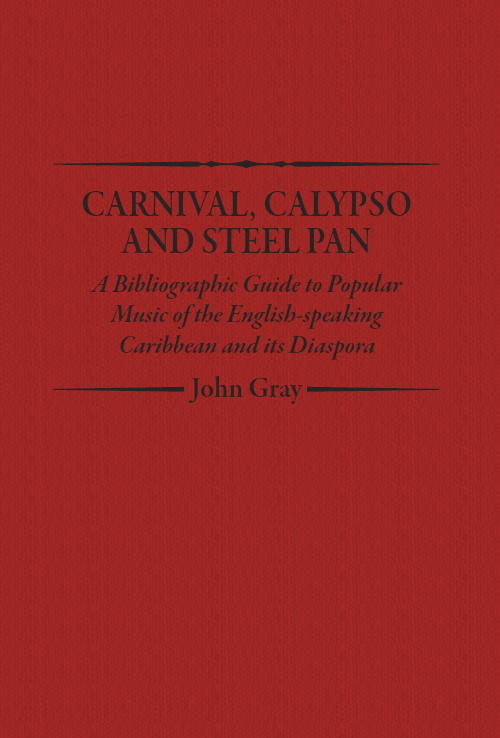 |
SERIES TITLE: Black Music Reference Series SERIES NUMBER: 6 DESCRIPTION The book’s main focus is on three tightly intertwined topics—Carnival, calypso and steel pan—and how each has evolved, both inside of Trinidad, their most important hub, and abroad in the large West Indian enclaves of New York, London and Toronto. The Carnival side of this trinity, a critical showcase for the region’s music and dance styles, is treated comprehensively. This includes an unprecedented level of detail on each of the four major Caribbean Carnivals—Trinidad Carnival, Brooklyn’s Labor Day Carnival, London’s Notting Hill Carnival, and Toronto’s Caribana—as well as important precursors such as Harlem’s West Indian Day Parades of the 1940s and ’50s and the early London Carnivals organized by Claudia Jones. Carnival’s musical aspects, both calypso and steel pan, are also covered in depth. In the case of calypso that encompasses all of its various forms, from its antecedents in kalinda stick-fighting to the “jump and wave” soca of today. A multitude of contemporary offshoots, e.g., binghi, chutney soca, ragga soca, ringbang, and gospelypso, are also documented in full. Numerous other sources help illuminate calypso’s central role as a vehicle for social and political commentary and its perspective on issues as diverse as immigration, race and gender relations, and national identity. Steel pan, calypso’s cousin, is discussed from the music’s introduction on the regional and international scene in the 1950s to its more recent role in the music programs of North America and Great Britain. A substantial Biographical and Critical Studies section documents the contributions made to these traditions by almost 600 individual performers and ensembles. Citations span from 1852 to 2012, with the bulk having been published between the 1930s and 2012. They encompass musical and cultural analyses, ethnographies, oral histories, popular histories and reportage along with a wealth of archival, audio-visual, and electronic resources. The book concludes with an extensive reference section that includes a list of Sources Consulted, a guide to relevant Libraries and Archives, two appendices, and separate Author and Subject Indexes.
ABOUT THE AUTHOR To order, visit www.african-diaspora-press.com, or use this order form: |
||||||||||||||||||||||||||||||||||||||||||||||||||
Method of Payment: □ Check □ Money Order □ IMO Preferred shipping method: □ Media Mail □ Parcel Post
|
||||||||||||||||||||||||||||||||||||||||||||||||||
